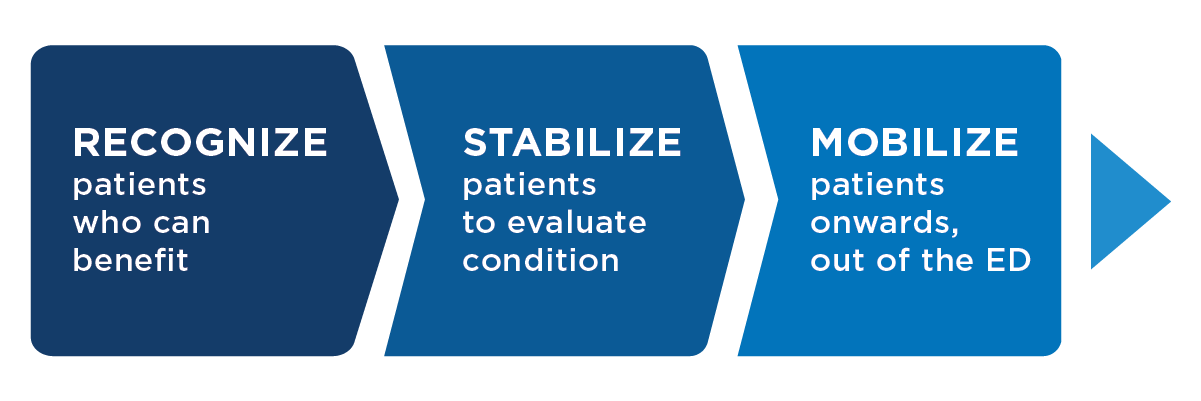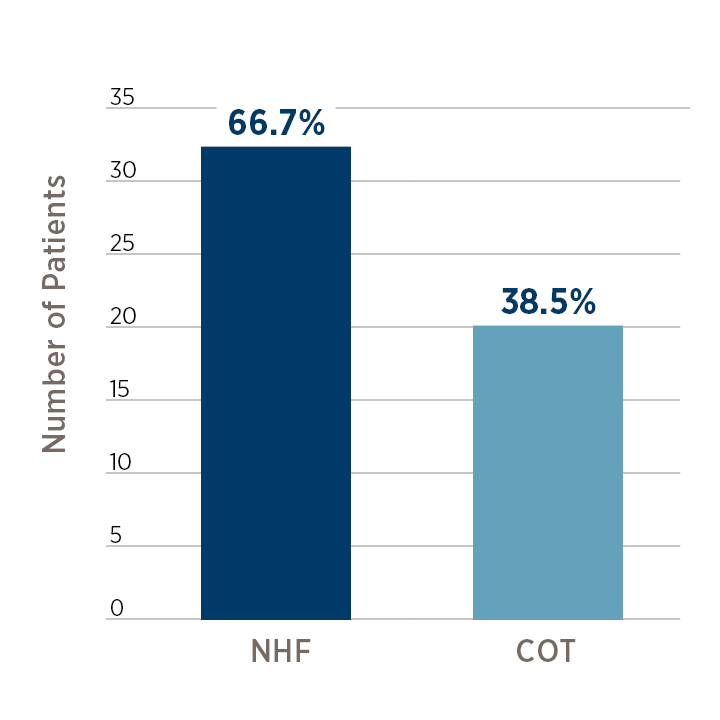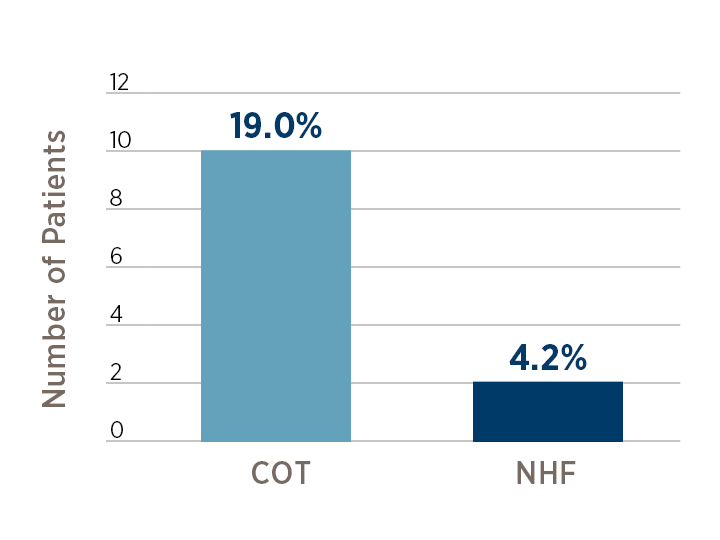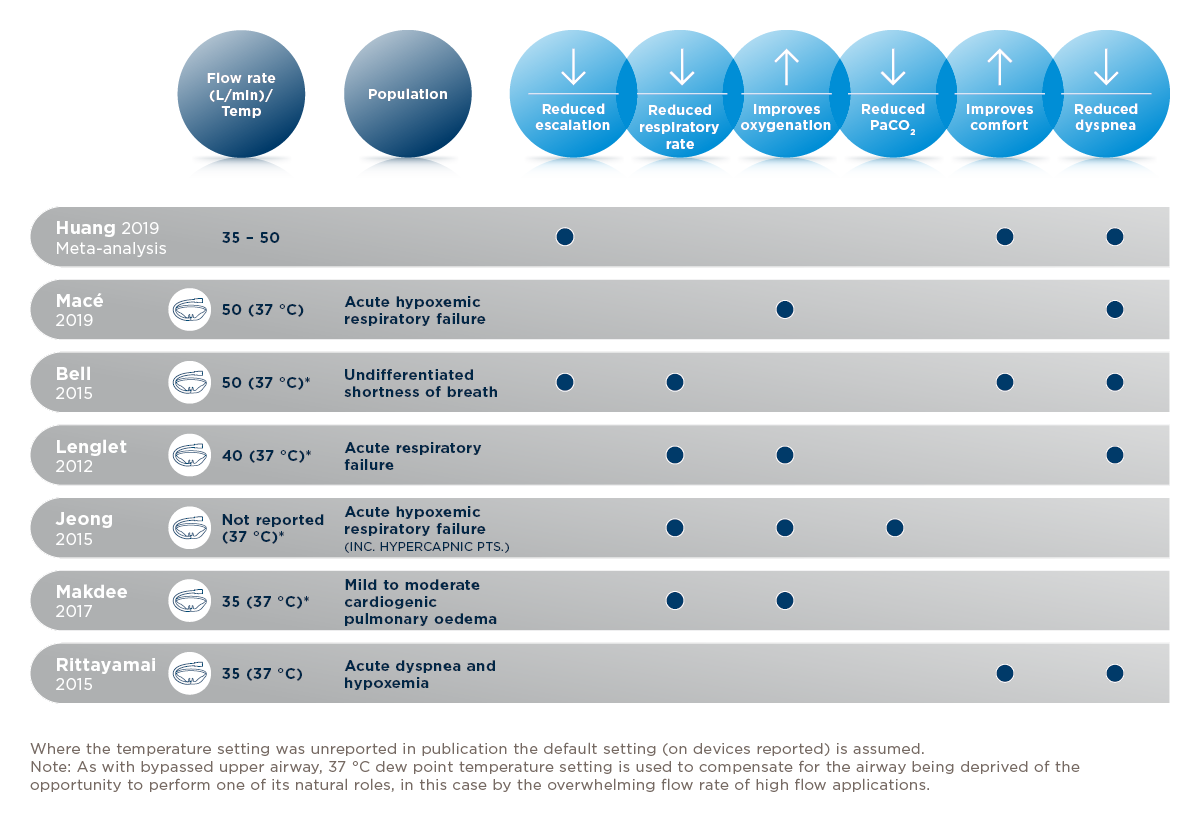Nasal high flow can decrease the need for escalation and might decrease the need for intubation.
(Meta-analysis; nasal high flow compared with COT and NIV)
- Huang, et al. Emerg Med Int. 2019.
- Huang, et al. Emerg Med Int. 2019.


Higher proportion of patients had > 20% reduction in respiratory rate using NHF: 66.7% NHF vs. 38.5% conventional oxygen therapy (COT), p=0.005.

Showed in an ED randomized control trial that NHF was associated with a lower proportion of patients requiring escalation in ventilation therapy.
Nasal high flow can decrease the need for escalation and might decrease the need for intubation.
“Patients with HFNC were much more likely to recover from respiratory failure.”
